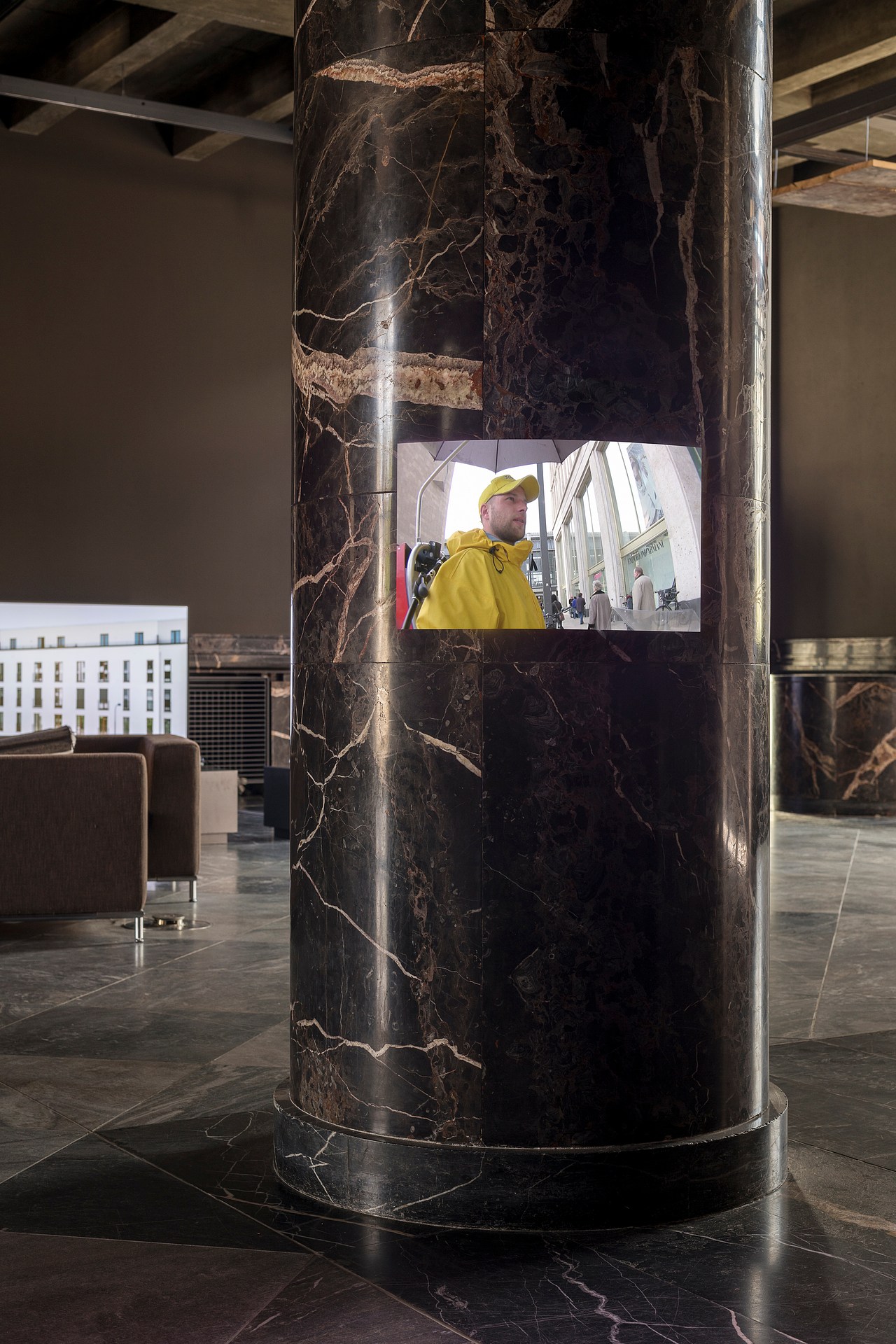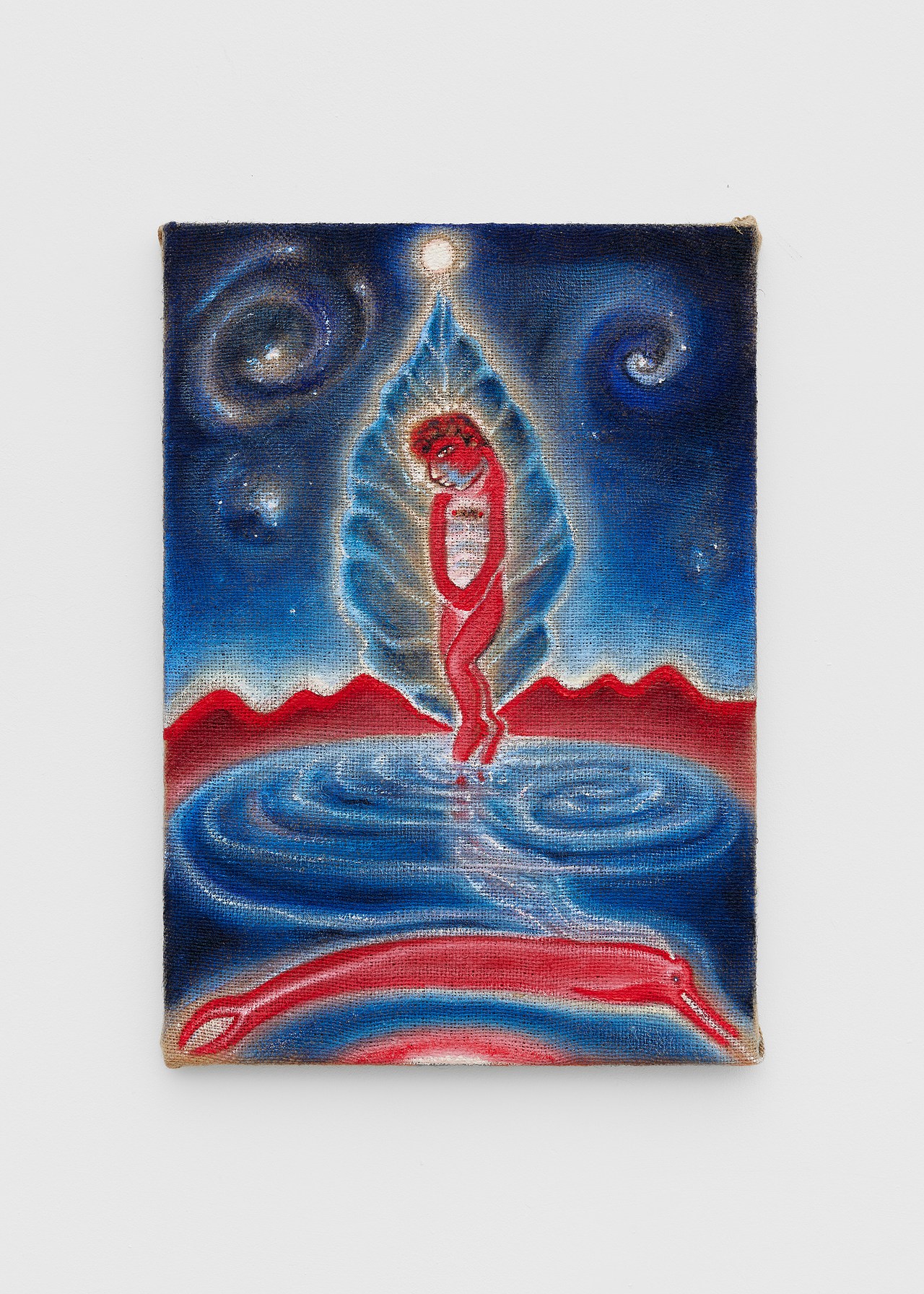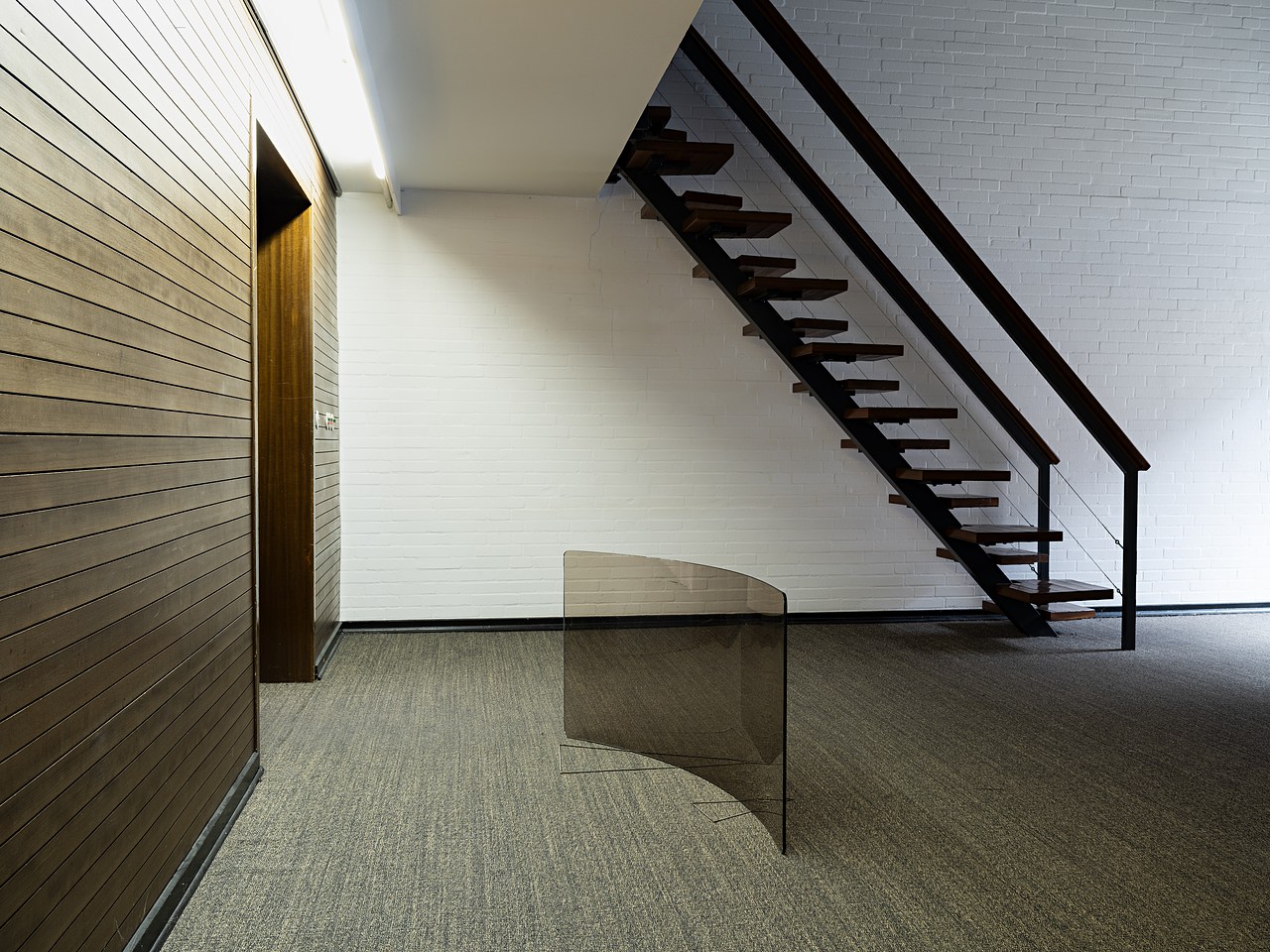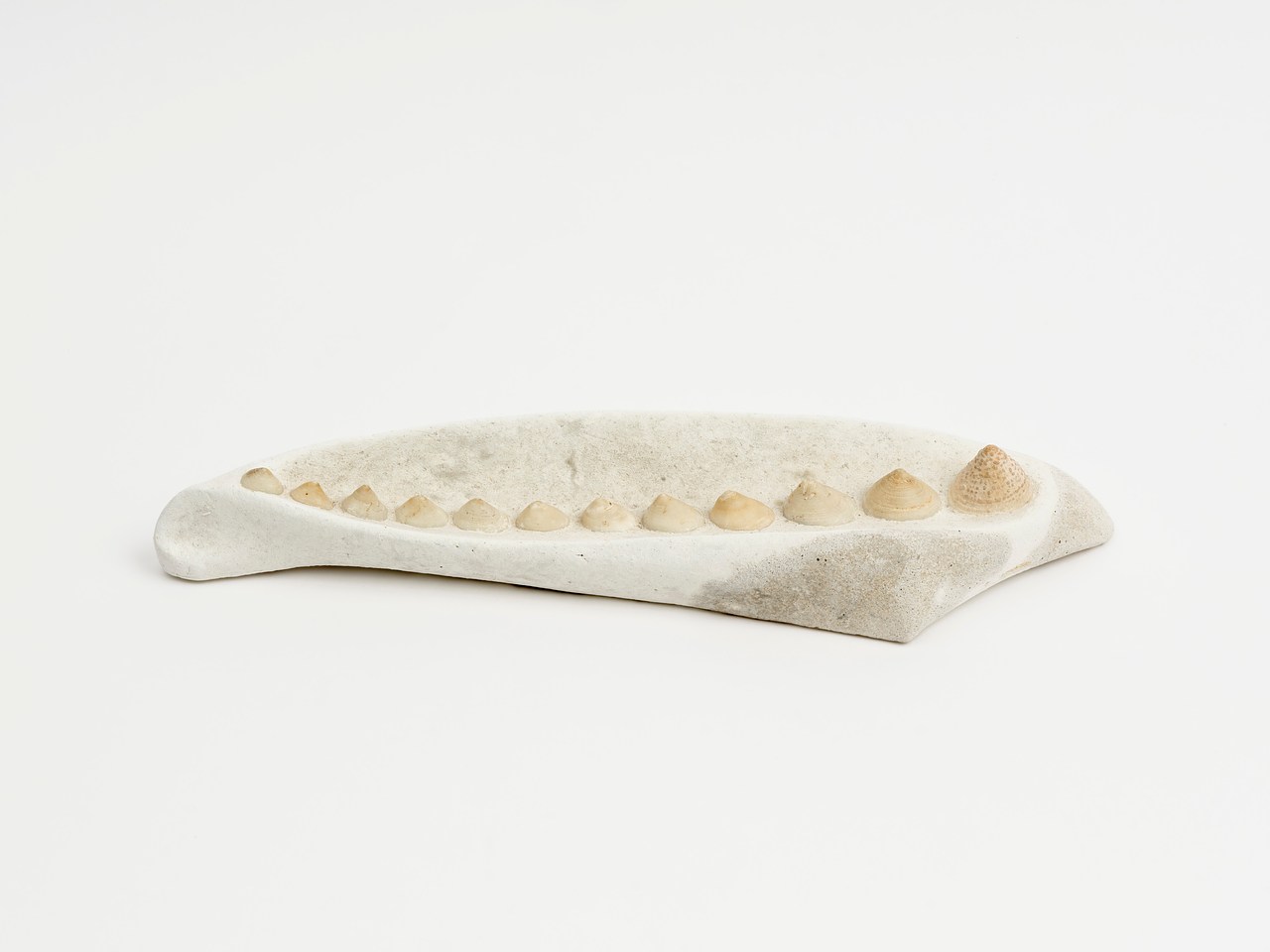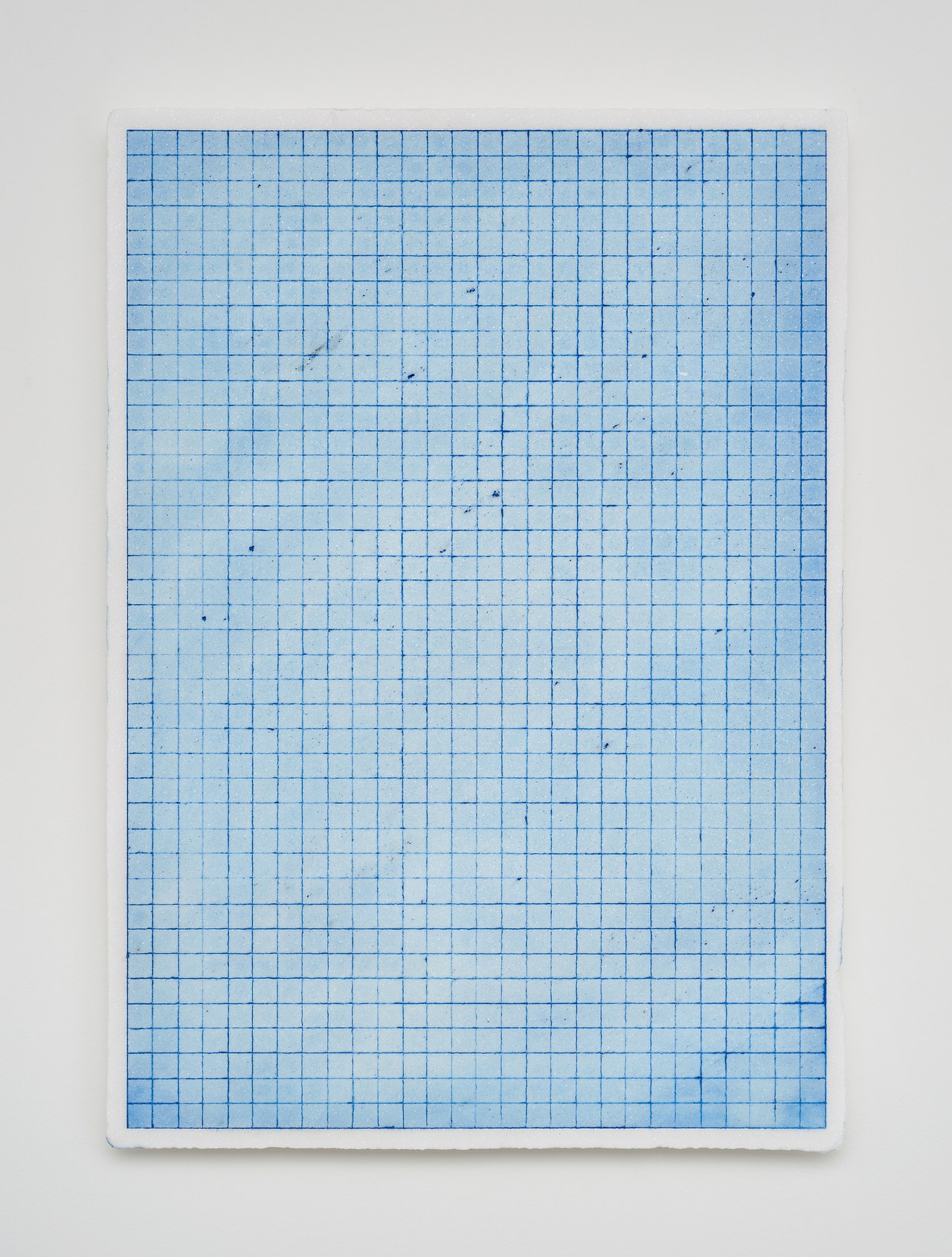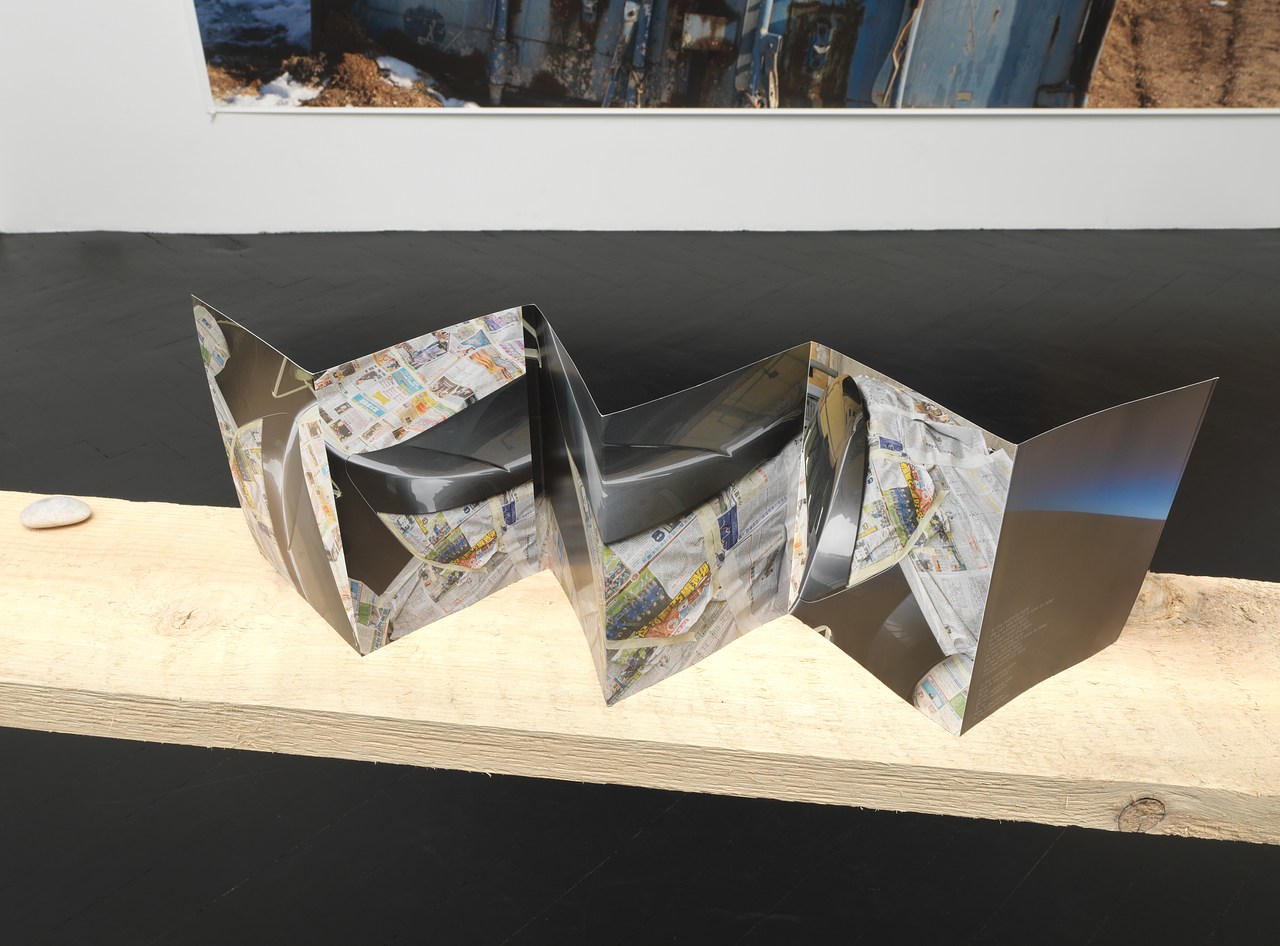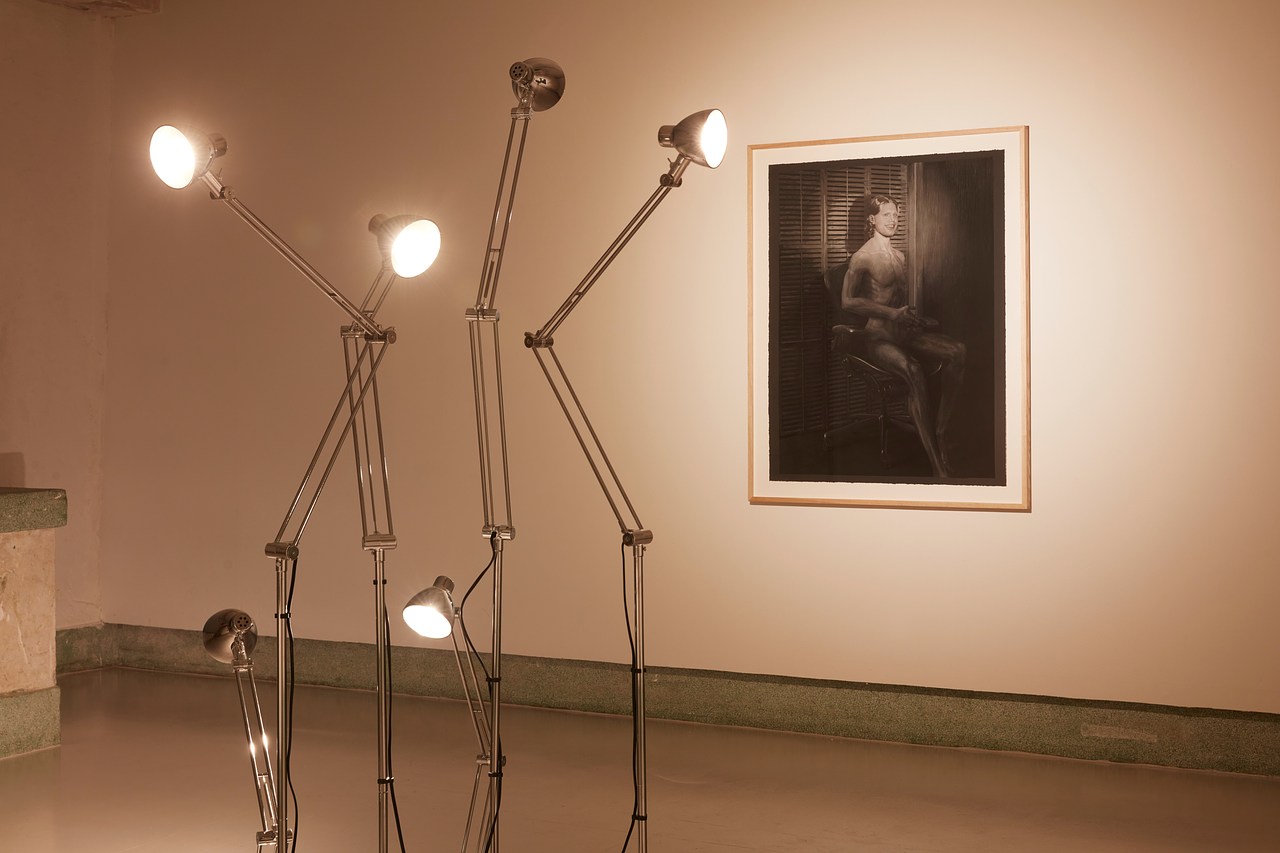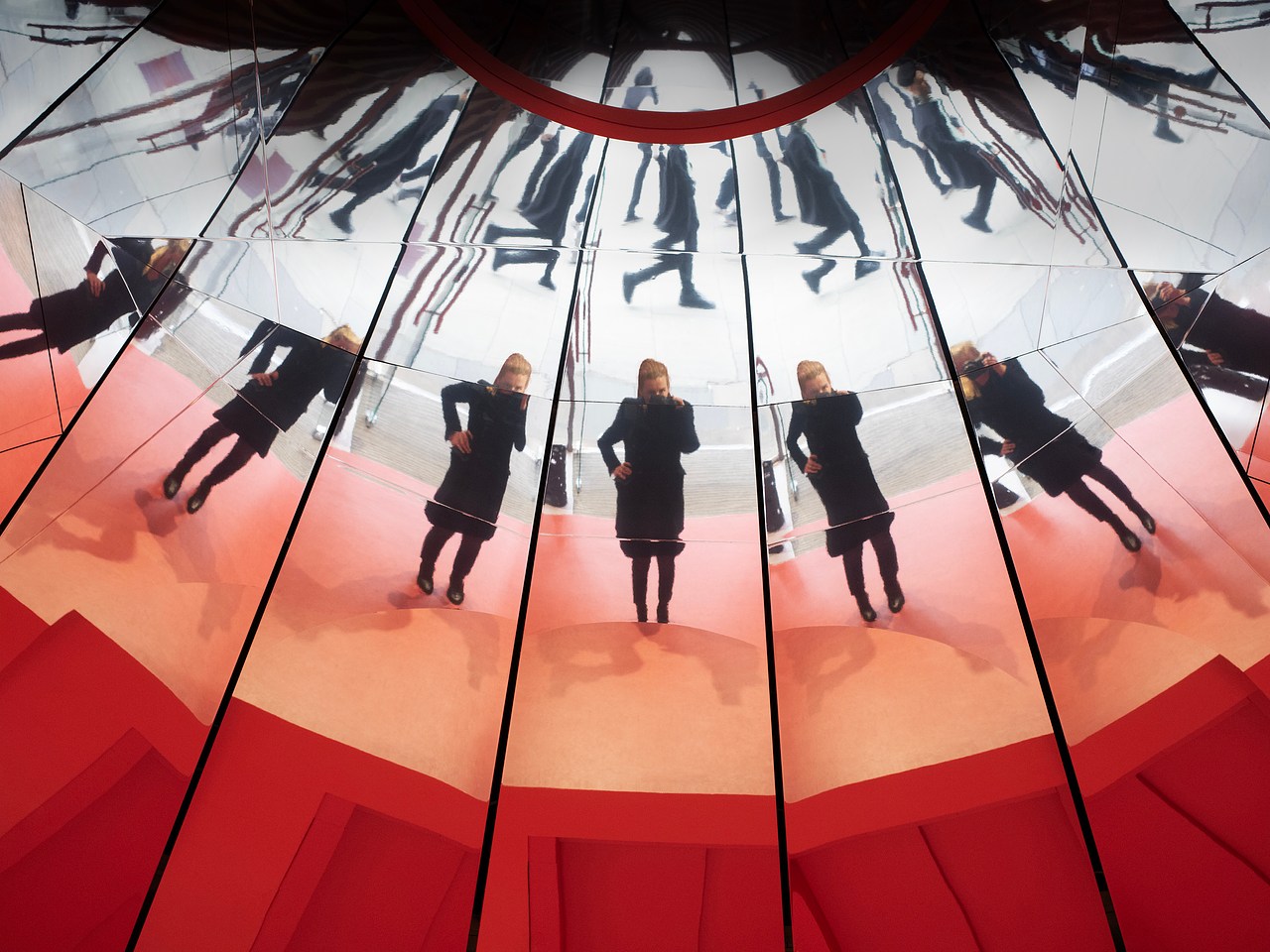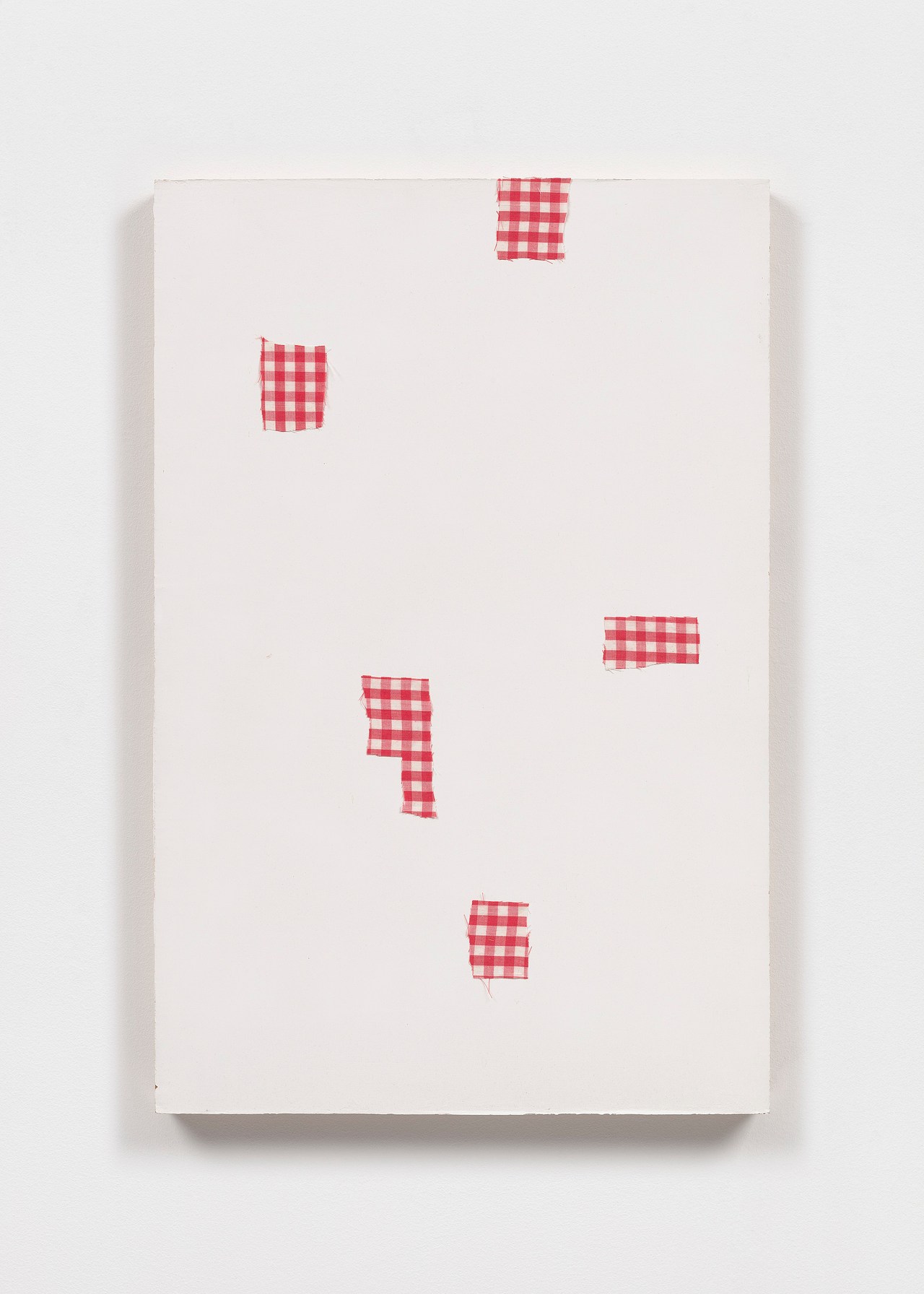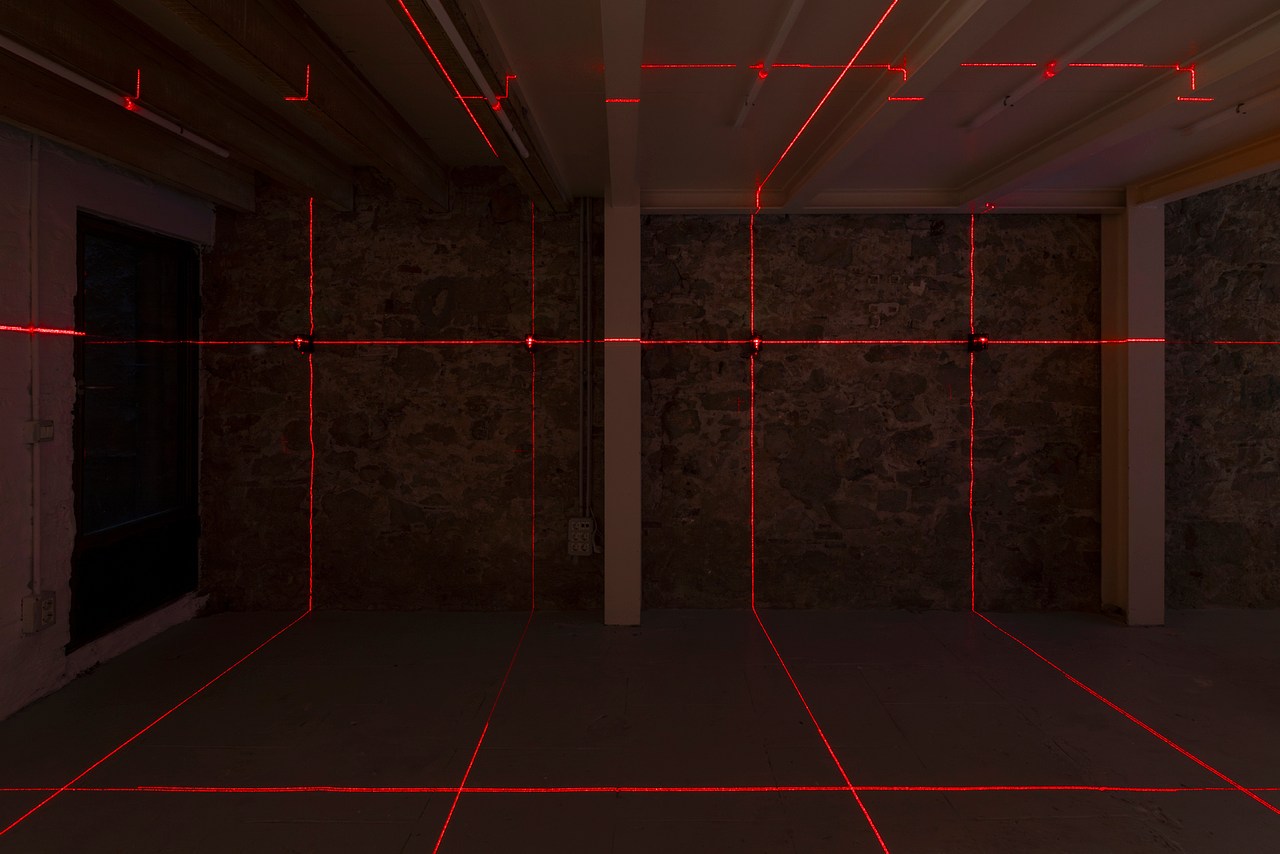There is an affinity between trees and bodies held in the language of limbs. This affinity is what makes the soft folds of pastel-colored fabric in Tamara Kostianovsky’s sculptures—life-sized trunks splayed across the gallery floor, innards exposed—so quietly disturbing. The title of her exhibition at Paris’s Musée de la Chasse et de la Nature, “Nature Made Flesh,” underscores this parallel of extremities. Citing the French philosopher Maurice Merleau-Ponty’s concept of the “flesh of the world,” which posits an elemental matrix bodily and worldly matter, Kostianovsky probes a corporeal way of being in the world, one she witnessed firsthand as a child in her father’s surgical practice. Describing an early familiarity with blood, fat, and skin, the artist transforms fabric into flesh and uses that flesh to sculpt a fantastical world. The effect can be whimsical, as in her array of fabric mushrooms that spread across a tree stump pinned to the wall. Incorporating black fabric into a number of pieces, referencing recent forest fires and their attendant burning and decay, Kostianovsky signals that her world is not entirely separate from our own.
Tamara Kostianovsky: Redwood, 2018.Though Kostianovsky’s sculptures are made from discarded textiles, they nonetheless have the clean, sweet softness of freshly tumbled laundry. She cites the origins of her practice in an accidentally shrunken garment. Some of her pieces are made of her father’s clothes, invoking the lingering intimacy that comes from a textile’s proximity to the body. The exhibition program calls this “upcycling,” but it’s much more than a useful convenience or a signal of sustainability: feeling the echo of a T-shirt’s wearer in the veining of a tree reminds us of the interconnectedness of our material world.
In other sculptures, however, Kostianovsky pushes against the softness of her chosen medium. A series of carcasses titled “Tropical Abattoir,” (2019–23), hung as if in a meat locker, couple the excruciating detail of caricature with the bright color of cartoons. Made from upholstery fabric, the stuffed skins have a homey familiarity that makes the violence of their presentation all the more jarring.
Emerging from exaggerated ribs are rare birds made of equally vibrant fabrics, a combination of life and death that Kostianovsky calls “tropical abattoir” in reference to her upbringing in Argentina. The work hangs in canny dialogue with the museum’s collections: an 18th-century still life on the opposite wall is a reminder that flayed flesh has long been a subject of art. Housed in a 17th-century mansion filled with both period pieces and artefacts of the history of hunting, the museum relies on a robust program of contemporary art to generate critical reflection on the relationship between humans and nature.
What is the upshot of seeing the world as flesh? Kostianovsky’s work suggests embodied entanglement can be a means of repairing a colonialist approach to nature, especially when surrounded by reminders of extractive exoticism fashionable amongst the European aristocrats who would have been the original inhabitants of the museum’s opulent rooms. Her “Foul Decorations” (2020) series hews most closely to the lavish style of the French Rococo. The series is modeled on wallpaper featuring tropical flora and fauna—often including imaginary birds—that was designed to transport its beholders to an elusive paradise underwritten by the insidious work of colonialism. In Kostianovsky’s recreation, three-dimensional fabric birds “invade” the space, taking over the walls and by extension, the environment. Based on indigenous rather than imaginary fowl, Kostianovsky’s work offers the birds a kind of homecoming, returning them to their native environments. Given a dimensionality absent in the original wallpaper, the birds sound an ultimately optimistic note. While the show does not shy away from representing decay and destruction, the irrepressible vibrancy of Kostianovsky’s work conjures a world that feels vividly alive.
Copyright
© Art News


